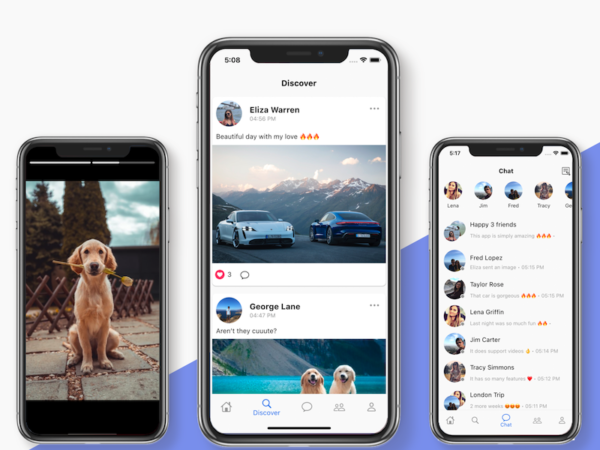Real-World AI Flutter Development: Case Studies and Implementation Strategies

Master the Art of AI Guidance with Sophisticated MDC Strategies
Build a native mobile app in minutes with AI. Try an AI React Native / Expo app generator that scaffolds complete projects from prompts.
Try AI FreeIntroduction
Moving beyond theory, this article explores how development teams are applying AI tools to real Flutter projects. We’ll examine detailed case studies that demonstrate the practical benefits, challenges faced, and solutions implemented when using AI-assisted development approaches.
These real-world examples provide valuable insights for Flutter developers looking to integrate AI tools into their workflow efficiently while achieving tangible results.
Case Study 1: E-commerce App Migration

Project Overview
- Company: RetailTech Solutions
- Challenge: Converting a complex e-commerce app from Provider to Riverpod state management
- Team Size: 5 developers
- Codebase Size: 75,000+ lines of code
- Timeline: Estimated 12 weeks for manual migration
AI Implementation Strategy
The team created a comprehensive migration strategy using Cursor AI:
-
MDC Preparation Phase
- Created detailed Provider→Riverpod migration patterns in MDC files
- Documented all custom Provider implementations
- Established pattern recognition rules for different state types
-
Analysis Phase
- Used AI to scan the entire codebase for Provider usage
- Generated a dependency graph of state management
- Created prioritized migration plan
-
Migration Phase
- Migrated core providers first using AI-generated transformations
- Applied consistent patterns across the codebase
- Generated unit tests to validate behavior consistency
-
Validation Phase
- Used AI to generate integration tests comparing old and new implementations
- Created visual regression test suite
- Conducted performance comparisons
Mega Bundle Sale is ON! Get ALL of our React Native codebases at 90% OFF discount 🔥
Get the Mega BundleMDC Files Created�
The team created specialized MDC files just for this migration:
# Provider to Riverpod Migration Patterns
## Simple Provider Migration
### Provider Pattern (OLD)
// OLD: Provider implementation
final counterProvider = Provider<int>((ref) => 0);
// Usage
Consumer(
builder: (context, watch, child) {
final count = watch(counterProvider);
return Text('$count');
}
)
### Riverpod Pattern (NEW)
// NEW: Riverpod implementation
final counterProvider = Provider<int>((ref) => 0);
// Usage
Consumer(
builder: (context, ref, child) {
final count = ref.watch(counterProvider);
return Text('$count');
}
)
## StateNotifier Migration
### ChangeNotifier Pattern (OLD)
// OLD: ChangeNotifier implementation
class Counter extends ChangeNotifier {
int _count = 0;
int get count => _count;
void increment() {
_count++;
notifyListeners();
}
}
final counterProvider = ChangeNotifierProvider((ref) => Counter());
### StateNotifier Pattern (NEW)
// NEW: StateNotifier implementation
class CounterNotifier extends StateNotifier<int> {
CounterNotifier() : super(0);
void increment() => state++;
}
final counterProvider = StateNotifierProvider<CounterNotifier, int>((ref) {
return CounterNotifier();
});
Mega Bundle Sale is ON! Get ALL of our React Native codebases at 90% OFF discount 🔥
Get the Mega BundleResults and Impact
- Time Saved: Migration completed in 3.5 weeks vs. estimated 12 weeks (70% reduction)
- Bug Reduction: 65% fewer regression bugs compared to previous manual migrations
- Code Quality: 92% pass rate on initial code reviews
- Team Satisfaction: Developers reported higher satisfaction with the new patterns
Challenges Faced
- Initial inconsistency in AI-generated code
- AI struggled with custom Provider implementations
- Some complex state interdependencies required manual intervention
Solutions Applied
- Created more detailed MDC rules with explicit examples
- Added “anti-pattern” sections to prevent common mistakes
- Implemented a phased migration approach with validation at each step
Key Takeaways
“The key was having clear, detailed examples in our MDC files. The more examples we added, the better the AI performed.” — Lead Developer
Case Study 2: Social Media App Development

Project Overview
- Company: SocialConnect Startup
- Challenge: Building a TikTok-like short video feature with complex animations
- Timeline: 6-week deadline for initial release
- Team Size: 3 developers (2 experienced, 1 junior)
AI Implementation Strategy
The team adopted a hybrid approach using both GitHub Copilot and Cursor AI:
-
Feature Planning
- Created detailed specifications for the video feature
- Broke down tasks into AI-friendly components
- Established clear architectural guidelines
-
Implementation Approach
- Used GitHub Copilot for UI component generation
- Leveraged Cursor AI for complex animation systems
- Generated test cases automatically
- Implemented performance optimizations
Key MDC File: Animation Guidelines
## Swipe Animations
- Use `AnimationController` with curved animations
- Target 60fps performance on mid-range devices
- Implement gesture recognition with `GestureDetector`
- Use hardware acceleration where available
## Example Implementations
### Vertical Swipe Animation
class VideoSwipeController {
late AnimationController controller;
// Initialize with vsync and duration
VideoSwipeController(TickerProvider vsync) {
controller = AnimationController(
vsync: vsync,
duration: Duration(milliseconds: 300),
);
}
// Handle swipe up gesture
void onSwipeUp(double velocity) {
final simulation = SpringSimulation(
SpringDescription(
mass: 1.0,
stiffness: 500.0,
damping: 25.0,
),
controller.value,
1.0,
velocity,
);
controller.animateWith(simulation);
}
}
## Video Playback Animations
- Implement fade-in for video thumbnails
- Add subtle zoom effect on video start
- Implement smooth transition between videos
- Use staggered animations for UI elements
AI Contribution
- Generated boilerplate code for video players
- Implemented complex gesture-based animations
- Created comprehensive unit and widget tests
- Helped optimize performance for smooth scrolling
Measurable Outcomes
- Development Speed: 40% faster development (completed in 3.5 weeks vs. estimated 6)
- Code Coverage: Achieved 87% test coverage (vs. typical 65%)
- User Engagement: Feature increased user session time by 32%
- Performance: Maintained 60fps on target devices even with complex animations
Mega Bundle Sale is ON! Get ALL of our React Native codebases at 90% OFF discount 🔥
Get the Mega BundleKey Takeaway
“We found that AI tools excelled at implementing complex animations that would have taken us days to perfect manually. This allowed our team to focus on the core business logic and user experience.” — Product Manager
Implementation Strategies for Common App Types
Different types of apps require different approaches when using AI tools. Here are strategies for common Flutter app categories.
Social Media Apps
Key Features to Implement with AI
- Feed Algorithm: Use AI to generate recommendation algorithm templates
- Dynamic Content Loading: Implement efficient lazy loading patterns
- Real-time Interactions: Generate WebSocket handling code
- Media Processing: Create image/video processing utilities
Sample MDC File Section: Social Media Feed
# Social Media Feed Implementation
## Feed Component Structure
- Use `CustomScrollView` with `SliverList` for performance
- Implement pagination with "infinite scroll" pattern
- Cache images using `cached_network_image`
- Use Riverpod for feed state management
## Post Interactions
- Implement optimistic updates for likes/comments
- Add haptic feedback for interactions
- Use staggered animations for comments
- Implement sharing with platform-specific APIs
Implementation Strategy
- Start with feed infrastructure and data models
- Add post rendering and media handling
- Implement social features (likes, comments, shares)
- Add real-time updates and notifications
- Optimize performance and UX
Video Platforms
Key Features to Implement with AI
- Video Player Integration: Generate custom video player controls
- Smooth Transitions: Create fluid navigation between videos
- Compression Algorithms: Implement efficient video handling
- Cache Management: Design intelligent caching for video content
Sample MDC File Section: Video Player
# Video Player Implementation
## Player Architecture
- Use `video_player` package as foundation
- Implement custom controls overlay
- Add support for different aspect ratios
- Implement picture-in-picture mode
## Performance Optimization
- Preload next video in sequence
- Implement quality selection based on connection
- Release resources for off-screen videos
- Use hardware acceleration when available
Implementation Strategy
- Start with single video playback functionality
- Add custom controls and user interactions
- Implement feed or gallery navigation
- Add engagement features (likes, comments)
- Optimize for performance and battery usage
Dating Apps
Key Features to Implement with AI
- Matching Algorithm: Generate matching logic templates
- Card Swiping Interface: Create smooth gesture interactions
- Chat Implementation: Build real-time messaging
- Profile Management: Create comprehensive profile systems
Sample MDC File Section: Profile Cards
# Dating App Card Interface
## Card Design
- Implement dismissible cards with custom animations
- Show profile details with gradient overlay
- Support multiple photos with indicator dots
- Add "info" button for expanded profile view
## Swipe Mechanics
- Right swipe for like (with green checkmark animation)
- Left swipe for pass (with red X animation)
- Up swipe for "super like" (with star animation)
- Add haptic feedback on decision
Implementation Strategy
- Build user profile management
- Implement card swiping interface
- Add matching algorithm and notifications
- Create messaging platform
- Add premium features and security measures
Video Chat Applications
Key Features to Implement with AI
- WebRTC Integration: Set up peer-to-peer connections
- Room Management: Create session handling logic
- UI Layouts: Design adaptive layouts for different call types
- Background Service: Implement notification handling for calls
- Sample MDC File Section: WebRTC Implementation
# Video Chat WebRTC Implementation
## Connection Setup
- Use Flutter WebRTC package
- Implement ICE candidate handling
- Set up STUN/TURN server configuration
- Handle connectivity changes gracefully
## Call UI
- Picture-in-picture for self view
- Adaptive layout for different orientations
- Implement controls overlay with auto-hide
- Add bandwidth and quality indicators
Implementation Strategy
- Set up WebRTC infrastructure and signaling
- Create basic video calling UI
- Implement call controls and features
- Add text chat alongside video
- Add multi-party calling capabilities
E-Commerce Platforms
Key Features to Implement with AI
- Product Catalog: Create efficient product browsing
- Shopping Cart**: Implement persistent cart management
- Payment Integration**: Set up secure payment processing
- Order Management**: Build order tracking and history
Sample MDC File Section: Shopping Cart
# E-Commerce Shopping Cart
## Cart State Management
- Use Riverpod StateNotifier for cart
- Persist cart items in secure storage
- Implement quantity adjustments with animations
- Calculate totals including tax and shipping
## Checkout Process
- Multi-step checkout with progress indicator
- Address form with validation and autofill
- Payment method selection with security icons
- Order summary with itemized receipt
Implementation Strategy
- Start with product browsing and filtering
- Add cart functionality and persistence
- Implement user account features
- Set up payment processing integration
- Create order fulfillment and tracking
Common Implementation Challenges and Solutions
When implementing these app types with AI assistance, certain challenges frequently emerge. Here’s how to address them:
Performance Optimization
# Performance Rules
## Image Loading
- Use cached_network_image with proper placeholder
- Implement progressive loading for large images
- Optimize image dimensions for display size
- Use WebP format where supported
## Memory Management
- Dispose controllers in widget disposal
- Use PagedListView for long lists
- Implement lazy loading for media content
- Monitor and optimize widget rebuilds
Real-time Features
# Real-time Implementation
## WebSocket Management
- Implement reconnection strategy with backoff
- Add heartbeat mechanism to detect disconnects
- Buffer updates during offline periods
- Use optimistic UI updates with conflict resolution
## State Synchronization
- Implement CRDTs for conflict-free data
- Use server timestamp for ordering events
- Add client-side prediction for responsiveness
- Implement proper error recovery
Implementing Sophisticated Features with AI
Let’s explore how to use AI tools to implement complex features common across different app types.
Feature: Custom Image Picker with Cropping and Filters
AI Prompt Strategy:
- Phase 1: Create base image picker
/image_picker.mdc Create an image picker that can select from gallery
and camera with permission handling. Include error states for denied permissions.
- Phase 2: Add cropping functionality
Extend the image picker to include cropping functionality with aspect ratio options
and a preview of the cropped result. Use the image_cropper package.
- Phase 3: Add filters
/filters.mdc Add image filters (brightness, contrast, saturation) to the
image picker with live preview. Allow user to combine multiple filters.
Feature: Real-time Chat with Typing Indicators
AI Prompt Strategy:
- Phase 1: Basic chat UI
/chat.mdc Create a chat interface with message bubbles, timestamps,
and support for different message types (text, image, system).
- Phase 2: Real-time functionality
/firebase.mdc Implement real-time message sending and receiving
using Firebase Firestore with appropriate security rules.
- Phase 3: Typing indicators
Add typing indicators that show when another user is typing. Use
debouncing to prevent frequent updates and handle multiple typers.
Practical Development Tips by App Category
Specific development tips tailored to each app category:
Social Media App
- Start with basic feed functionality
- Add features incrementally
- Focus on image optimization
- Implement caching strategy
AI Prompt Example:
``dart @performance.mdc Create an image feed component that efficiently loads and caches images, with lazy loading and pull-to-refresh functionality.
Video Platform
- Begin with single video playback
- Add scrolling mechanism
- Implement engagement features
- Optimize video loading
AI Prompt Example:
.mdc /video.mdc Create a vertical scrolling video player component
similar to TikTok that preloads the next video and releases resources for videos
that are not currently visible.
Dating App
- Start with profile cards
- Add swipe mechanics
- Implement matching logic
- Add chat features
AI Prompt Example:
/cards.mdc Create a swipeable card stack with smooth animations for like/dislike
actions. Include bounce-back animation when returning to center and handle gesture
velocity for dynamic animations.
Video Chat App
- Begin with UI components
- Add WebRTC one-to-one calls
- Implement chat features
- Add group call support
AI Prompt Example:
/webrtc.mdc Implement a one-to-one video call handler using Flutter WebRTC
with proper connection setup, ICE candidate handling, and fallback to audio-only when
network conditions are poor.
E-Commerce App
- Start with product listing
- Add cart functionality
- Implement checkout flow
- Add order management
AI Prompt Example:
/products.mdc /cart.mdc Create a product grid with lazy loading and
"add to cart" functionality. Implement cart state using Riverpod with persistent
storage and animated indicator of items added to cart.
Success Path: From Prototype to Production
A structured approach to take your AI-assisted app from concept to launch.
Phase 1: Getting Started (Week 1-2)
Week 1: Foundation Setup
- ✅ Set up Flutter development environment
- ✅ Install and congure AI tools (Cursor AI and/or GitHub Copilot)
- ✅ Create your first MDC file with basic guidelines
- ✅ Build a simple “Hello World” app with AI assistance
Week 2: Basic Components
- ✅ Create common UI components with AI help
- ✅ Practice different prompt styles to see what works best
- ✅ Learn to modify and customize AI-generated code
- ✅ Build a basic multi-screen app
Phase 2: Building Skills (Week 3-4)
Week 3: Core App Features
- ✅ Implement state management with AI assistance
- ✅ Create specialized MDC files for different app aspects
- ✅ Work with REST APIs and JSON data
- ✅ Handle user authentication flows
Week 4: Testing & Refinement
- ✅ Generate unit and widget tests with AI
- ✅ Implement error handling best practices
- ✅ Add data persistence and offline capabilities
- ✅ Create a complete app with multiple features
Phase 3: Advanced Development (Month 2+)
Weeks 5-6: Advanced Features
- ✅ Create complex UI animations with AI assistance
- ✅ Implement real-time features (chat, notifications)
- ✅ Add advanced gestures and interactions
- ✅ Optimize app performance with AI suggestions
Weeks 7-8: Production Readiness
- ✅ Implement analytics and monitoring
- ✅ Add accessibility features
- ✅ Prepare for app store submission
- ✅ Create CI/CD pipelines with AI assistance
Learning Milestones
| Week | Key Milestone | Verification |
|---|---|---|
| 1 | First AI-assisted Flutter app | App runs without errors |
| 2 | Custom UI component library | Components follow design system |
| 4 | Complete app with state management | All tests passing |
| 6 | Advanced animations and interactions | Smooth 60fps performance |
| 8 | Production-ready application | Successful deployment |
Looking for a custom mobile application?
Our team of expert mobile developers can help you build a custom mobile app that meets your specific needs.
Get in TouchConclusion
Real-world case studies demonstrate that AI-assisted Flutter development isn’t just a theoretical concept—it’s delivering tangible benefits for teams of all sizes. By adopting structured implementation strategies tailored to specific app categories and following a clear development path, you can leverage AI tools to build sophisticated Flutter applications more efficiently.
The most successful teams have found that the key to effective AI collaboration lies in well-structured MDC files, clear development strategies, and a willingness to iterate on both code and AI prompts. By learning from these real-world examples, you can accelerate your own Flutter development while maintaining high code quality and performance.
In our final article, we’ll explore the future of AI-assisted app development and how to prepare for emerging trends in this rapidly evolving field.
“Great apps aren’t just built—they’re a collaboration between human creativity and AI capabilities.”
Happy coding!
Series Navigation
- Part 1: Getting Started with MDC Files: AI-Assisted Flutter Development Basics
- Part 2: Cursor AI vs. GitHub Copilot: Choosing the Right AI Assistant
- Part 3: Advanced MDC Techniques: Maximizing AI Productivity
- Part 4: Real-World AI Flutter Development: Case Studies (You are here)
- Part 5: Future-Proofing Flutter Development: The Evolution of AI Tools